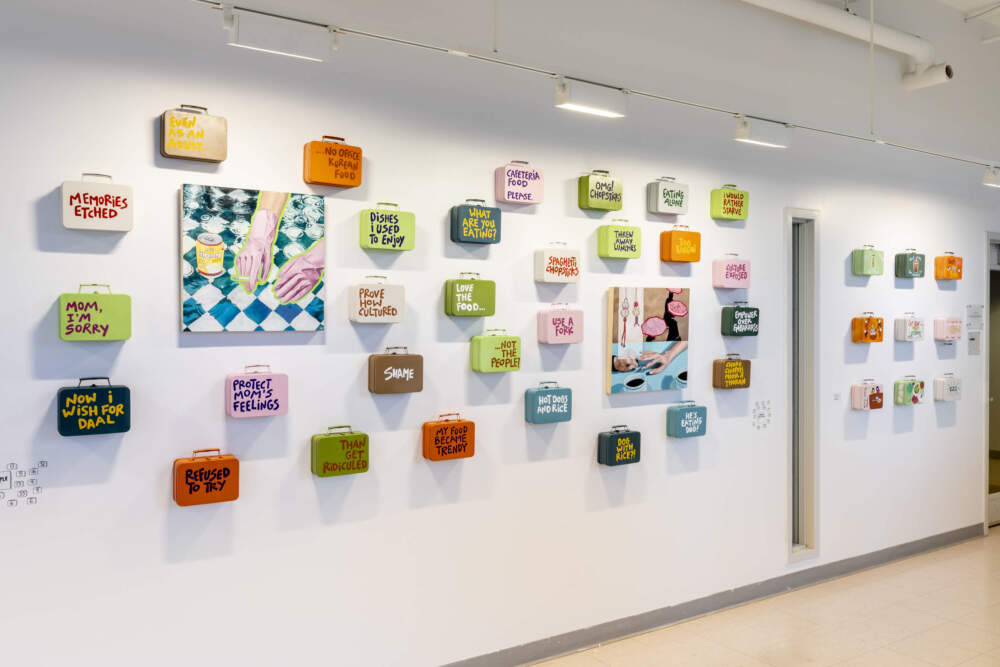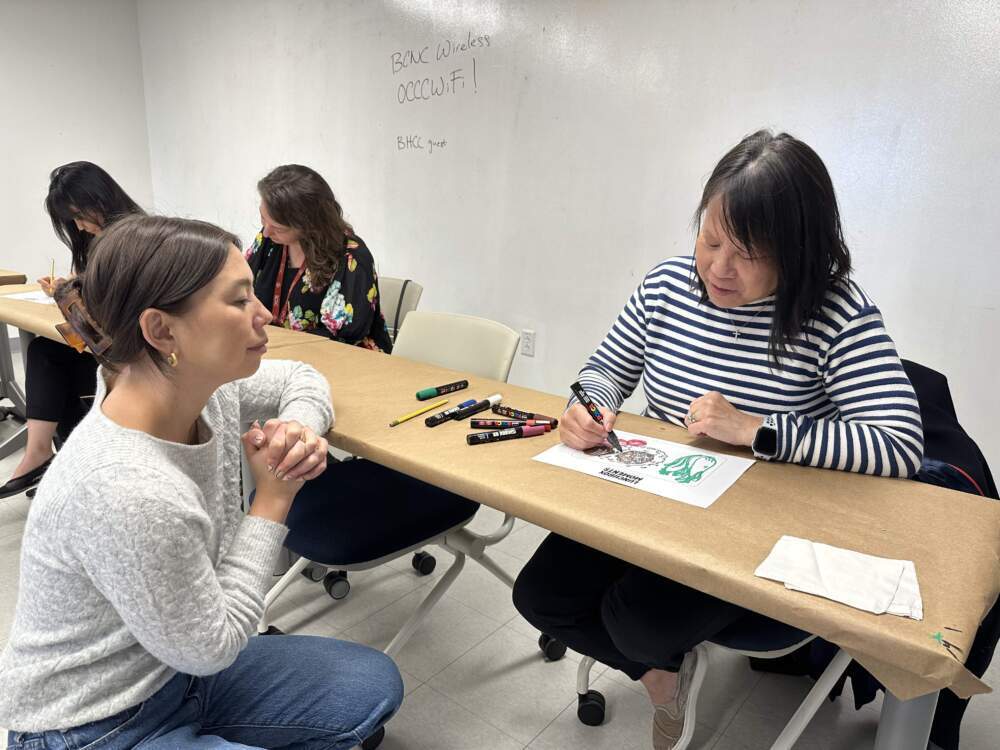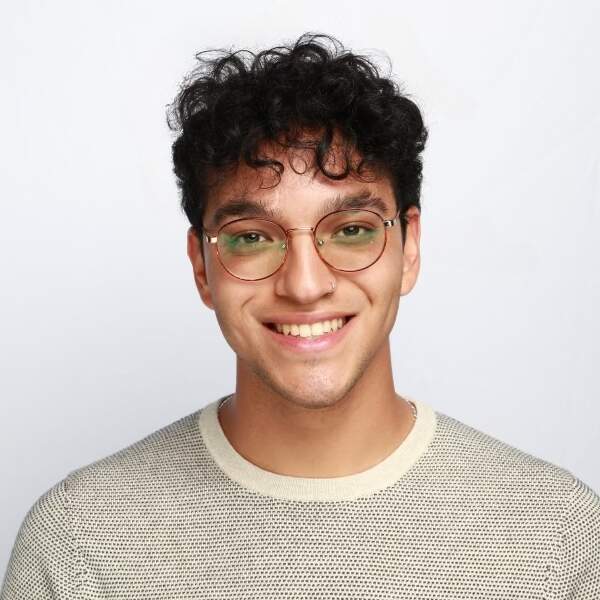Advertisement
Sandwiched between cultures: new exhibit explores the pain of 'lunchbox moments'

A "lunchbox moment" is a familiar occurrence for many kids of different ethnicities. The experience happens when a traditional meal elicits a reaction, positive or negative, from onlookers. A new Chinatown exhibit titled “Lunchbox Moments” aims to explore the complex relationship between food and culture.
At the Pao Arts Center, two walls are covered in brightly painted lunchboxes with quotes like "What are you eating?" or "skeptical smell." It’s the work of New England-raised Amie Bantz. The Asian-American artist and art director collected these quotes, along with dozens of others, from family, friends, online sources and a workshop hosted at the Pao Arts Center.

“I grew up with my mom telling me this story of her lunchbox moments. I've always had this narrative in the back of my mind of when she was a really young girl and first immigrated to the U.S.,” says Bantz. “She wanted to fit in with her peers ... and asked my halmeoni, my grandmother, for a red plaid lunchbox, just so she could fit in.” Bantz’s mother soon realized fitting in was going to be harder than she imagined.
Instead of eating a stereotypically American lunch, like a sandwich, her mother packed her kimbap, a Korean version of sushi. “But my grandmother had forgotten to cut the pieces. So it was this long aluminum foil snake," Bantz says. "And my mom was so embarrassed and she just shut the lunchbox and didn't eat for the rest of the day."
Another precursor to “Lunchbox Moments” came in 2020 with a spike in Asian hate crimes and the Atlanta shooting of four Korean women a year later. But Bantz says exploring these themes of violence felt too dark for her. She found another route. “I realized being biracial, some of those formative moments of my life, when I started to feel the most other, or the most like an outsider revolved around food,” says Bantz.
"I realized being biracial, some of those formative moments of my life, when I started to feel the most other, or the most like an outsider revolved around food."
Amie Bantz
The issue sparked a dialogue between Bantz and her friends when she realized she was not alone. She turned to the internet to help her gather more recollections of lunchbox moments. Now, Bantz travels with her exhibit hosting workshops in places like Carlisle, Pennsylvania — allowing people to transform their own lunchbox moment into art.
Bantz says she’s seen a change in attitude toward ethnic meals. People have become more accepting and interested in eating multicultural foods. It’s something she’s glad to see. “But on the other hand, I've heard the sentiment of a lot of my peers saying, 'Yeah, well I go on Instagram and the same white kids who tormented me, who made fun of me are now eating kimchi and posting it on their stories.' And that's something that I try to capture with the show.”
“Lunchbox Moments” is on display at the Pao Arts Center through Feb. 17.
